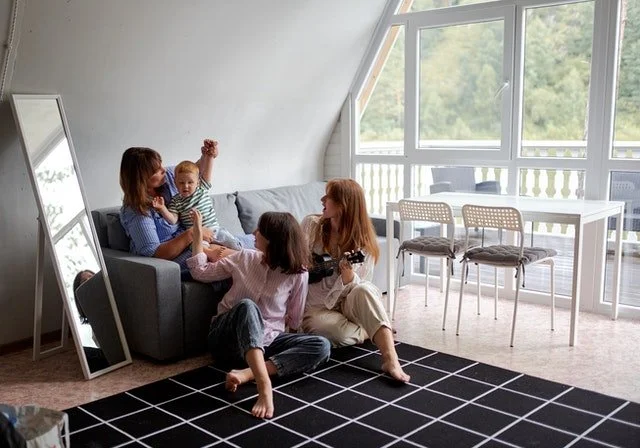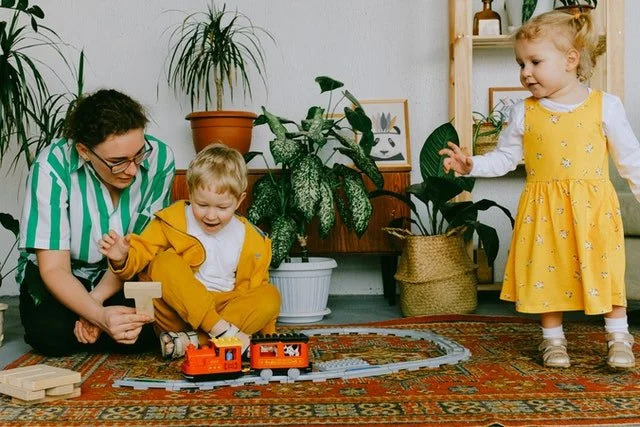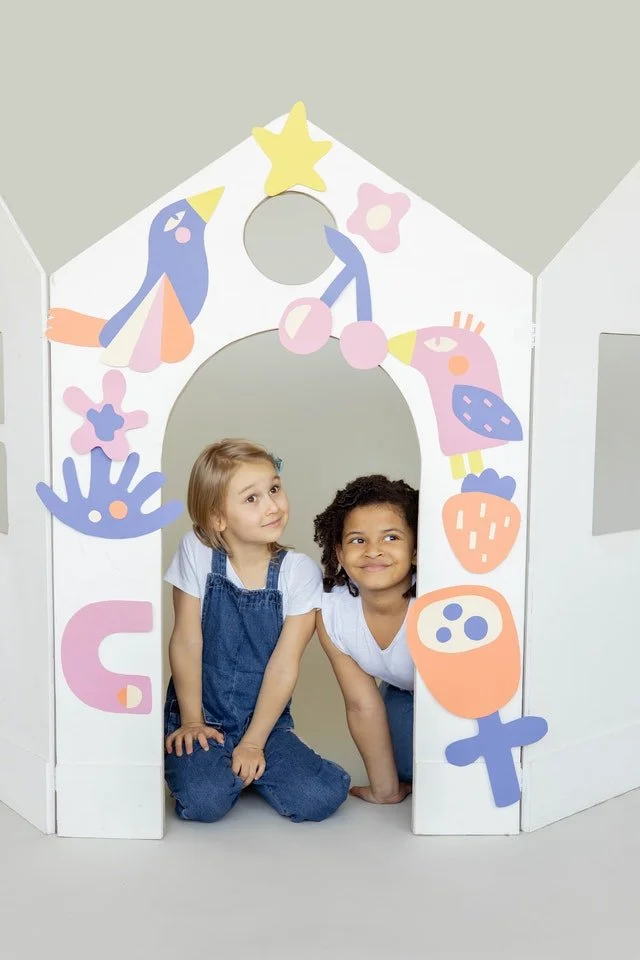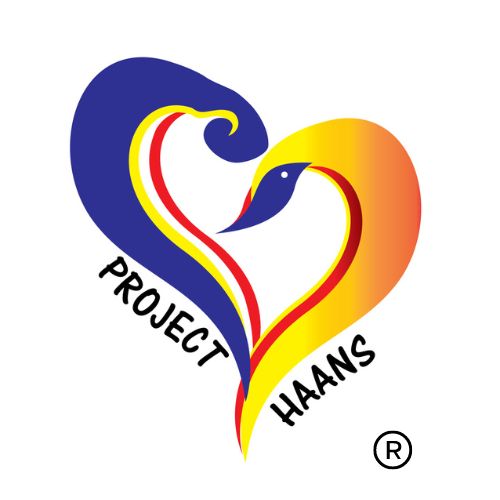By Speech Sisters

Image source: Pexels
This is a combination of 3 pieces first published on Speech Sisters’ blog. The Speech Sisters are Brooke and Bridget who have more than 20-years of combined experience a Speech Therapists, working with children who have communication disorders and delays. Their Instagram account, Speech Sisters has over 556,000 followers and its content is helpful and witth.
The Importance of Imitation

Image source: Pexels
Imitation is a critical part of language development. Of course, we want our children to imitate us NOW and “say this” and “say that” when we command them to, but this doesn’t always work, and this often puts unnecessary pressure on our little ones. Instead, try imitating them! Copy your child’s facial expressions, sounds and movements…then WAIT…and see how they respond!⠀
At Speech Sisters, we know that imitation helps toddlers learn, and most interactions with your little one have opportunities for you to imitate them and for them to imitate you. Think about when you are giving your toddler a bath. Usually, there is some amount of splashing that goes on – right? Well, copy them! Imitate that splashing! You may get a little wet but that’s okay. This is a great language opportunity. Repeat the words “splash”, “wet”, “uh-oh” and “water”!
Here’s an imitation activity to try out with your little one…
When you are playing with animal toys or reading a book about animals, make their noises and see if your toddler will attempt to imitate you! “Moo, baa, meow!” These are great words to start with because they are simple consonant-vowel combinations and easy for our little ones to articulate early on.
It may seem like toddlers just START talking out of nowhere. But really, your child is hard at work on several prerequisite skills that must fall into place first! One of those important pieces is IMITATION. Typically, your child must be showing the ability to imitate you before words emerge.
But let’s back up – this starts way before imitating whole words! First, he/she should be copying your motor movements (eg., stomping like a dinosaur, clapping hands, pointing, blowing kisses, sticking out tongue, etc). Later, he/she begins to copy your sounds and then words.

Picture source: Pexels
To work on imitation, first try imitating your child! If he throws a ball, you throw it. If he pushes a car, you push one too. This should encourage some back and forth imitation between you both. Also, practice lots of songs and nursery rhymes that have hand gestures to accompany the words!
To learn simple and effective strategies to help get your little one talking, check out our Talk on Track (newborn-14 months) and Time to Talk: Toddler Course (15-36 months). We’d love to equip you to experience the joy of your little one talking to you!
The above was first published on 10 May 2020 here
How to Get Your Child to Imitate Sounds & Words
At Speech Sisters we want you to know that the best way to get your baby making various speech sounds is for you to get eye to eye and model it! This way, your little one can see your mouth and hear the sound/word at the same time! We even recommend a hands-on approach so that your baby can also feel the vibration of the sound or feel a puff of air depending on the sound that you are making. We call this the TRIFECTA… SEE the sound, HEAR the sound, and FEEL the sound. ⠀
WHEN should I start using this method?
You can really start as early as you would like, in fact, we recommend directing your child’s attention to your mouth early on! This way they can see how you articulate sounds/words and they may even attempt to copy you (most babies will start imitating around 6-9 months of age)! Imitation is SO critical in building language and exactly why it is the first tip we focus on in our evidence-based ITALK technique from our Talk On Track Online course.
We find that babies will respond best to this strategy around 12 months when their receptive language skills are stronger and they are starting to follow very simple commands. When my baby girl was around 12 months old and began following simple directions, I would tell her, “Look at my (mama’s) mouth (as I point to my mouth).” She would then look directly at my mouth and I would then say the sound or simple word. Typically, she would try to mimic at least the sound, if not the word I said.

Picture source: Pexels
WILL my baby be able to imitate every sound I make?
It would be amazing if babies could produce all the sounds at once, but speech sounds are not all acquired at the same time. Some sounds will be mastered early and other sounds are not expected to be perfected until after kindergarten. ⠀⠀
So what are the earliest developing sounds? The American Speech-Language-Hearing Association states that the following sounds are first to emerge between 1-2 years old: b, p, m, d, n, h, followed by t, k, g, w, ng, f, and y, which are typically mastered by the age of 3 years old. ⠀
Many times we hear our babies experimenting with these sounds early on during a good babble session! We teach you exactly how to encourage your baby to keep making these sounds and how to move them from babbling into words in our online course called, Talk On Track.⠀
WHAT should I do to get my baby to imitate me?
Get face on so that you can direct your child’s attention to your mouth in order for them to see how you articulate!
-
Once you are facing each other, try getting their little hand near or on your face so they can feel the sound in addition to hearing it and seeing it. This trifecta will help them master these sounds!
-
Another great way to help your baby master these speech sounds is to exaggerate the sound or word (Say “shhhhhhoe” or “mmmmoon”).
-
Finally, don’t be afraid to raise your pitch or intonation when talking. Research shows that this helps babies stay focused for a longer duration of time, which allows for more language learning opportunities!
Remember, as with everything, repetition is key! The more you use this strategy the quicker your baby will catch up and start imitating you!⠀
To learn simple and effective strategies to help get your little one talking, check out our Talk on Track (newborn-14 months) and Time to Talk: Toddler Course (15-36 months). We’d love to equip you to experience the joy of your little one talking to you!
The above was first published on 10 May 2020, here
The Importance of Symbolic Play
Did you know that play helps children learn language?
Play is super important in the development of language because it encompasses skills like interaction, socialization, cognition and problem-solving.

Picture source: Pexels
At Speech Sisters, we believe play is one of the ways that children learn new skills and it is so rich in language opportunities. Symbolic play is when a child uses one object to represent another object. For example, your child might pick up the TV remote and use it as a telephone, or maybe they hop in a cardboard box and pretend that it’s their car.
A study was conducted that looked at different types of play and which was most effective for language development. The findings were that during symbolic play, the interaction between parents and their children were found to happen more often and for longer periods of time. Symbolic play also elicited significantly more symbolic gestures from both toddlers & their parents – which is crucial for language development.
This type of play is critical to language development because both the parent and the child must have a mutual understanding of the representational function of objects. The crazy thing is that this usually happens naturally and without the use of language.
To learn simple and effective strategies to help get your little one talking, check out our Talk on Track (newborn-14 months) and Time to Talk: Toddler Course (15-36 months). We’d love to equip you to experience the joy of your little one talking to you!
Quinn, S., & Kidd, E. (2018). Symbolic play promotes non-verbal communicative exchange in infant-caregiver dyads. British Journal of Developmental Psychology. 10.1111/bjdp.12251.
The above was first published on 10 May 2020, here





